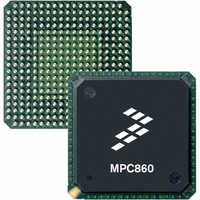MC68MH360ZP33L Freescale Semiconductor, MC68MH360ZP33L Datasheet - Page 367

MC68MH360ZP33L
Manufacturer Part Number
MC68MH360ZP33L
Description
IC MPU 32BIT QUICC 357-PBGA
Manufacturer
Freescale Semiconductor
Specifications of MC68MH360ZP33L
Processor Type
M683xx 32-Bit
Speed
33MHz
Voltage
5V
Mounting Type
Surface Mount
Package / Case
357-PBGA
Lead Free Status / RoHS Status
Contains lead / RoHS non-compliant
Features
-
Available stocks
Company
Part Number
Manufacturer
Quantity
Price
Company:
Part Number:
MC68MH360ZP33L
Manufacturer:
FREESCALE
Quantity:
1 831
Company:
Part Number:
MC68MH360ZP33L
Manufacturer:
MOTOLOLA
Quantity:
672
Company:
Part Number:
MC68MH360ZP33L
Manufacturer:
Freescale Semiconductor
Quantity:
10 000
Part Number:
MC68MH360ZP33L
Manufacturer:
FREESCALE
Quantity:
20 000
Company:
Part Number:
MC68MH360ZP33LR2
Manufacturer:
Freescale Semiconductor
Quantity:
10 000
- Current page: 367 of 962
- Download datasheet (5Mb)
pin. Thus, DACKx is the acknowledgment of the original cycle steal request given on the
DREQx pin.
It is possible to cause the IDMA to perform back-to-back cycle steal requests. To achieve
this, DREQx should be asserted to generate the first request, negated, and reasserted dur-
ing the access to the device. If the IDMA detects that DREQx is reasserted prior to the S3
falling edge of the bus cycle to the device (i.e., bus cycle when DACKx is asserted), then
another back-to-back cycle steal request will be performed. Otherwise, the bus is relin-
quished. If DREQx was not reasserted soon enough, a new request will be made to the
IDMA, but the bus will be relinquished and re-requested by the IDMA.
The previous paragraphs discuss the general rules; however, important special cases are
discussed in the following points:
7.6.4.5 IDMA BUS ARBITRATION. Once the IDMA receives a request for a transfer, it
begins arbitrating for the IMB. (The four request types are internal maximum rate, internal
limited rate, external burst, and external cycle steal.)
On the QUICC, the IDMAs, SDMAs, and DRAM refresh controller, called internal masters,
have the capability to become bus master. To determine the relative priority of these mas-
ters, each is given an arbitration ID. The user programs the arbitration ID (a value between
0 and 7) of the IDMAs into the ICCR. The arbitration IDs of the two IDMAs must be different
by a value of 2 (e.g., IDMA1 ID = 2 and IDMA2 ID = 0). These values are used to determine
the relative priority of the IDMA channel and the other internal bus masters.
MOTOROLA
1. The sample point at the S3 falling edge means the last S3 before the S4 edge that
2. The sample point at S3 assumes that the required setup time is met, as defined in Sec-
3. If SRM is cleared in the CMR (default condition), then DREQx is synchronized inter-
completes the cycle. Thus, if wait states are inserted in the bus cycle, the sample point
is later in the cycle.
tion 10 Electrical Characteristics.
nally before it is used; therefore, DREQx must be reasserted one clock earlier than the
S3 falling edge to be recognized on that cycle and generate a back-to-back request.
To generate back-to-back cycle steal requests, DREQx should
be reasserted after DACKx is asserted, but before the S3 falling
DSACKx pins are also sampled at falling S3 to determine the
end of the bus cycle.
Typically, the IDMA IDs are configured by the user to be the low-
est of the internal bus masters.
edge. Instead of saying before the S3 falling edge, one could
also say before or with the assertion of DSACKx because the
Freescale Semiconductor, Inc.
For More Information On This Product,
MC68360 USER’S MANUAL
Go to: www.freescale.com
NOTE
NOTE
IDMA Channels
7-43
Related parts for MC68MH360ZP33L
Image
Part Number
Description
Manufacturer
Datasheet
Request
R
Part Number:
Description:
Manufacturer:
Freescale Semiconductor, Inc
Datasheet:
Part Number:
Description:
Manufacturer:
Freescale Semiconductor, Inc
Datasheet:
Part Number:
Description:
Manufacturer:
Freescale Semiconductor, Inc
Datasheet:
Part Number:
Description:
Manufacturer:
Freescale Semiconductor, Inc
Datasheet:
Part Number:
Description:
Manufacturer:
Freescale Semiconductor, Inc
Datasheet:
Part Number:
Description:
Manufacturer:
Freescale Semiconductor, Inc
Datasheet:
Part Number:
Description:
Manufacturer:
Freescale Semiconductor, Inc
Datasheet:
Part Number:
Description:
Manufacturer:
Freescale Semiconductor, Inc
Datasheet:
Part Number:
Description:
Manufacturer:
Freescale Semiconductor, Inc
Datasheet:
Part Number:
Description:
Manufacturer:
Freescale Semiconductor, Inc
Datasheet:
Part Number:
Description:
Manufacturer:
Freescale Semiconductor, Inc
Datasheet:
Part Number:
Description:
Manufacturer:
Freescale Semiconductor, Inc
Datasheet:
Part Number:
Description:
Manufacturer:
Freescale Semiconductor, Inc
Datasheet:
Part Number:
Description:
Manufacturer:
Freescale Semiconductor, Inc
Datasheet:
Part Number:
Description:
Manufacturer:
Freescale Semiconductor, Inc
Datasheet:











